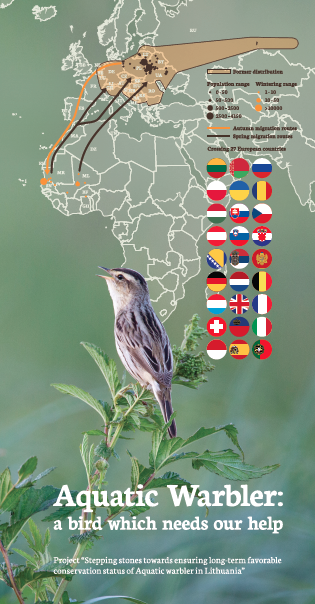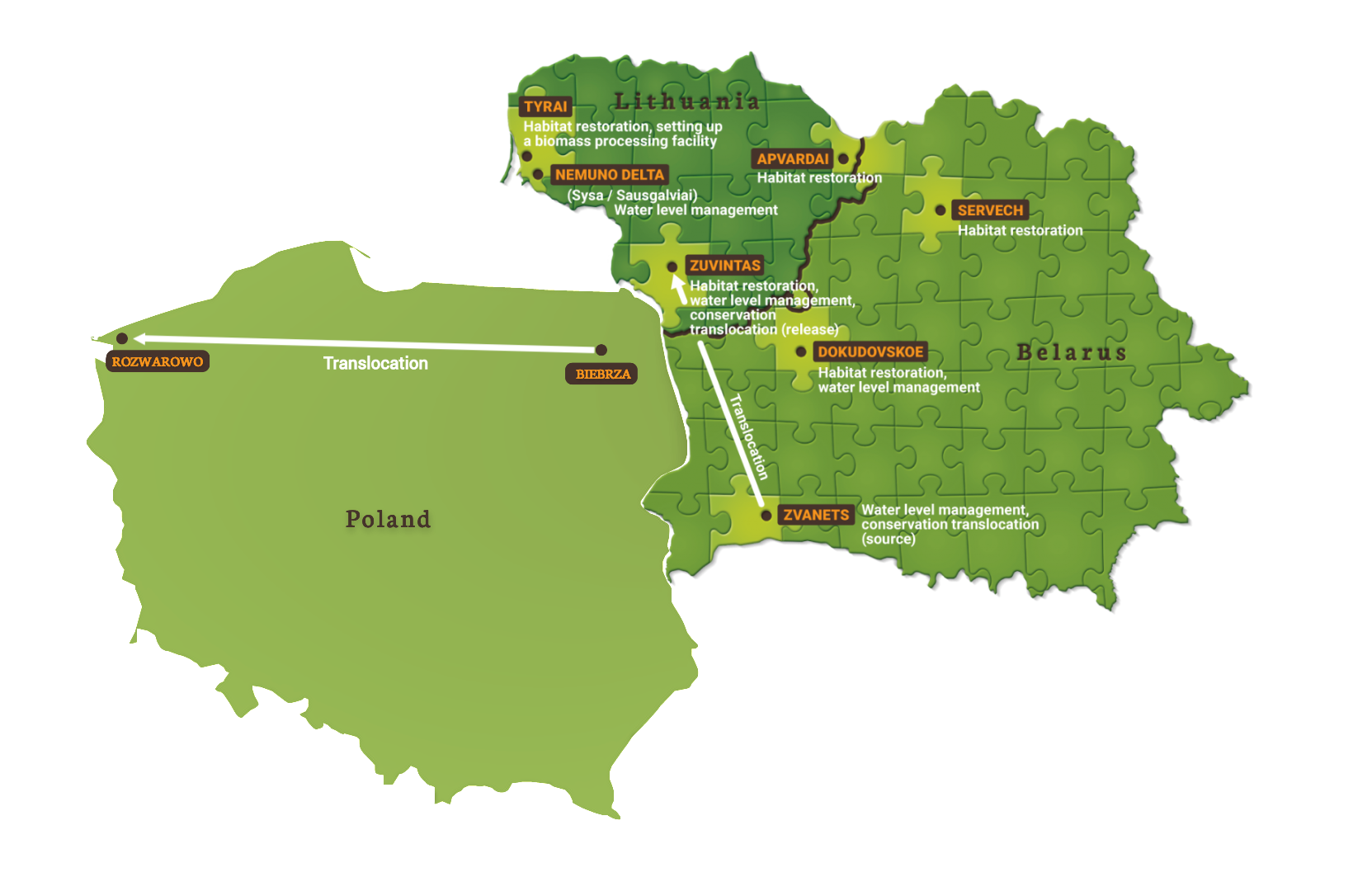The project “Stepping stones towards long-term favorable conservation status of Aquatic Warbler in Lithuania and Belarus”

The Aquatic Warblers song has been dubbed the ambulance in many countries, and thanks to various projects and initiatives the main relics of the hymn have been restored. Now is the time to take long-term treatment – to strive to extend the boundaries of these territories even further, to restore intermediate habitats that can combine it with a jumbo-dwelling habitat network. In the long run, this would allow the birds to migrate from one area to another – reducing the fragmentation of the population, increasing genetic diversity and viability of the birds. This would increase the opportunity for the species to recover altogether – in conditions of unfavorable conditions in one territory, birds could move and move in adjacent areas.

This endeavor is long-lasting. Although the project implementation will take time the specialists of the protection of the Aquatic Warbler are advancing in all directions where the bird is still found (Lithuania, Poland, Belarus, Ukraine).
The project is implemented in two stages:
- In 2016–2023 the main phase of the project took place. Until the autumn of 2022 the project activities took place in Lithuania and Belarus. Because of the joint work in these countries project’s abbreviation “LIFE MagniDucatusAcrola” was created. It reminds us of the Grand Duchy of Lithuania (Magnus Ducatus Lithuaniae), where the ancestors of Lithuania and Belarus died for common goals. This time, together with our neighbors, we sought to secure the long-term protection of the globally threatened Aquatic Warbler (Acrocephalus paludicola). During the 7th year of the project, we applied conservation methods that have already been successfully tested and applied; and also used pioneering methods that no-one have ever tested before. The project was taking place in Lithuania and Belarus, and included the largest habitat of Aquatic Warblers in the world – Zvaniec swamp. The total area of the project activity was over 20,000 hectares, which is similar to the total area of Lithuanian cities Kaunas and Panevėžys.
-
In 2023-2026 the project prolongation phase takes place. During it, the main focus falls on the application and improvement of the translocation method.
In order to create a core habitat network, the following main directions of work are foreseen:
Project is implemented in 2016/07–2026/01 (in 2023 the project was prolonged for 3 years)
Project total budget in Lithuania, Belarus and Poland: 4,097,038 Eur.
Project is financed mainly by the European Commission directly through the LIFE program. It’s share is 3,072,778 Eur (75 %).
Contribution of the Ministry of Environment of the Republic of Lithuania (only activities carried out in Lithuania are partially financed): 736 000 Eur
Other part is the input from all project partners.


